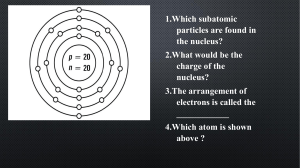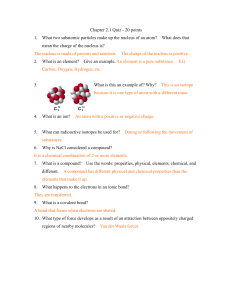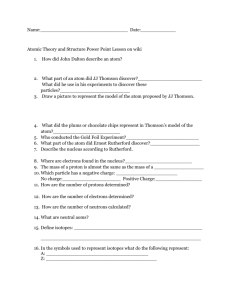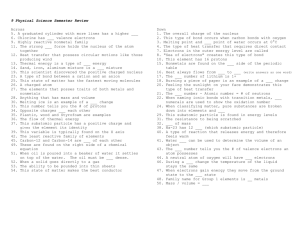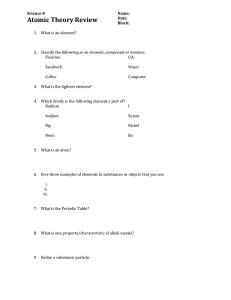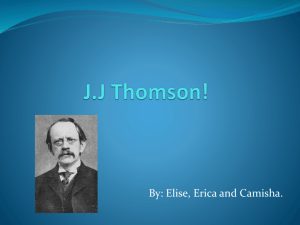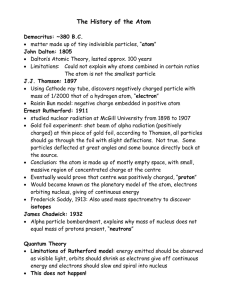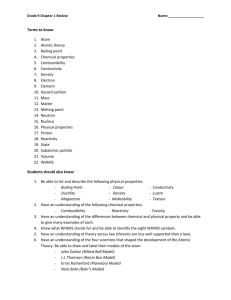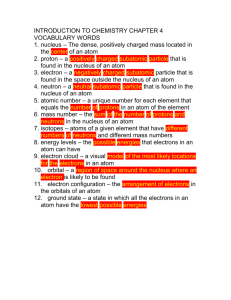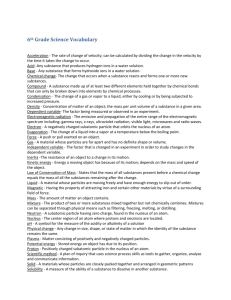Modern Atomic Theory Worksheet: Structure & Models
advertisement
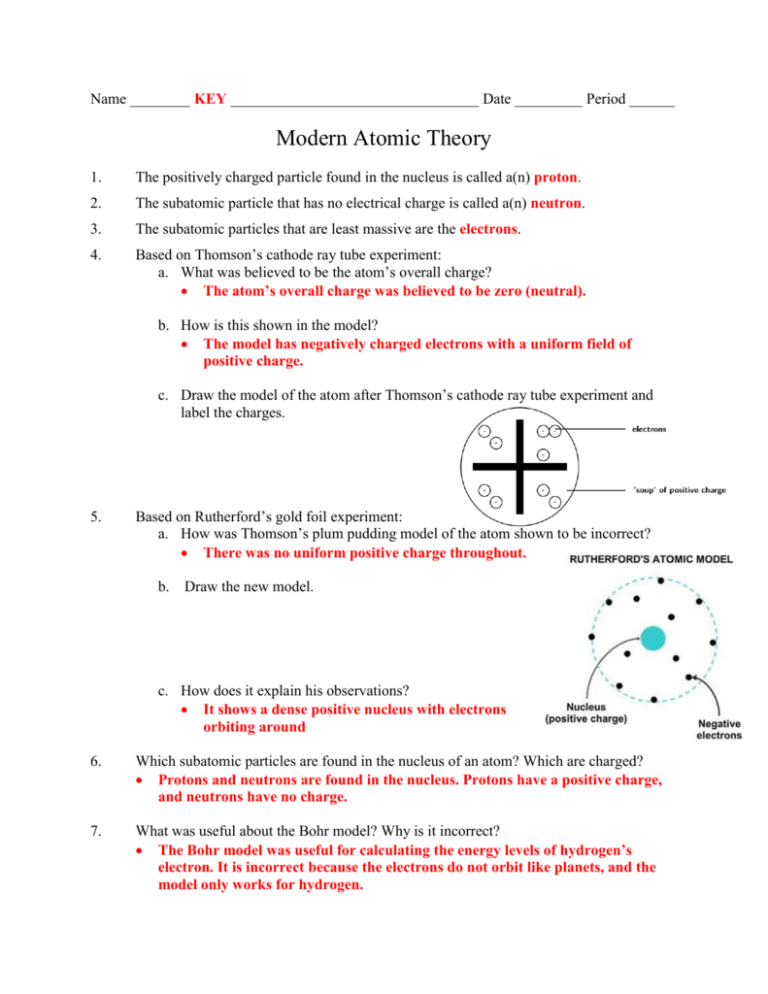
Name ________ KEY _________________________________ Date _________ Period ______ Modern Atomic Theory 1. The positively charged particle found in the nucleus is called a(n) proton. 2. The subatomic particle that has no electrical charge is called a(n) neutron. 3. The subatomic particles that are least massive are the electrons. 4. Based on Thomson’s cathode ray tube experiment: a. What was believed to be the atom’s overall charge? The atom’s overall charge was believed to be zero (neutral). b. How is this shown in the model? The model has negatively charged electrons with a uniform field of positive charge. c. Draw the model of the atom after Thomson’s cathode ray tube experiment and label the charges. 5. Based on Rutherford’s gold foil experiment: a. How was Thomson’s plum pudding model of the atom shown to be incorrect? There was no uniform positive charge throughout. b. Draw the new model. c. How does it explain his observations? It shows a dense positive nucleus with electrons orbiting around 6. Which subatomic particles are found in the nucleus of an atom? Which are charged? Protons and neutrons are found in the nucleus. Protons have a positive charge, and neutrons have no charge. 7. What was useful about the Bohr model? Why is it incorrect? The Bohr model was useful for calculating the energy levels of hydrogen’s electron. It is incorrect because the electrons do not orbit like planets, and the model only works for hydrogen.
